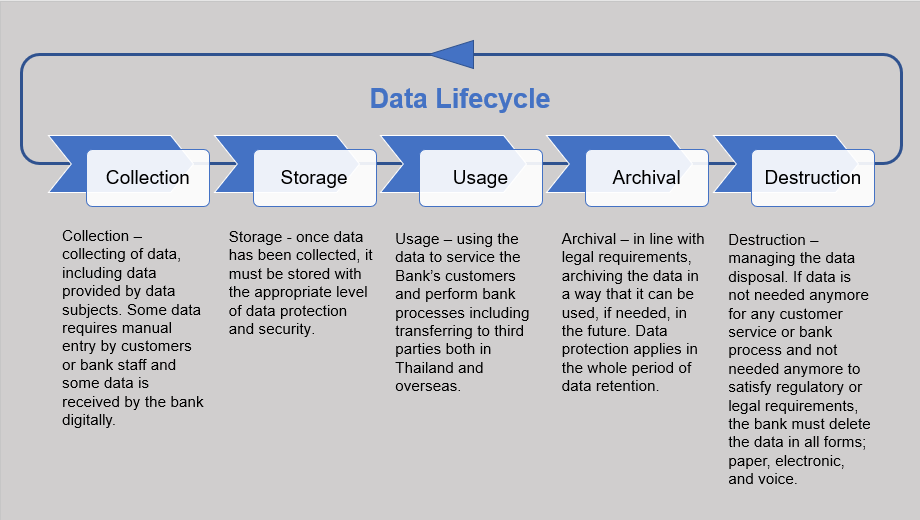The Importance of Effective Information Devastation Practices in Shielding Sensitive Details and Ensuring Computer Safety And Security
In a period where information violations are increasingly common, the importance of effective data destruction techniques can not be overstated. Implementing durable information devastation approaches not only alleviates these risks however likewise aligns with legal compliance demands, making sure that companies copyright their credibility and foster client trust fund.
Understanding Information Devastation
Comprehending data devastation is vital in today's digital landscape, where sensitive info can conveniently be compromised. Reliable information destruction entails not simply deleting files yet ensuring that information is irretrievable with detailed approaches. This procedure is necessary for companies that manage confidential client information, intellectual residential or commercial property, or interior records, as any type of breach can cause severe financial and reputational repercussions.
Information destruction includes various methods, consisting of shredding physical media, degaussing magnetic storage space tools, and employing software-based solutions that overwrite information several times. Each approach serves a specific function and has to line up with the level of sensitivity of the details being thrown away. For instance, physical damage is usually liked for hard disk drives having highly personal information, while software techniques may be adequate for less sensitive information.
Additionally, adhering to sector criteria and guidelines, such as the General Information Protection Law (GDPR) or the Health Insurance Transportability and Accountability Act (HIPAA), is vital for conformity and to minimize lawful dangers. Organizations should establish a durable information destruction plan, train staff members on best techniques, and on a regular basis examine their procedures to make certain that all sensitive info is disposed of securely and successfully.
Threats of Inadequate Practices
Insufficient information devastation techniques subject companies to significant risks that can have far-ranging consequences. When sensitive information is not properly thrown away, it stays at risk to unapproved gain access to, which can lead to information violations and identification theft. Such cases not only compromise the safety of individuals but also stain the company's online reputation, leading to a loss of client depend on and possible monetary effects.
In addition, governing conformity is increasingly strict in several industries. Failing to abide by data destruction laws can lead to large penalties and lawsuits versus organizations. These penalties can stress funds and draw away attention from core organization operations.
Additionally, the misuse of recurring information can bring about intellectual property burglary or corporate espionage, jeopardizing affordable benefits (data destruction). The impact of insufficient data destruction prolongs past prompt monetary losses; it can additionally lead to long-lasting damage to brand integrity and market position

Organizations need to recognize that information security is not only concerning protecting against violations; it also includes the responsible monitoring of information throughout its lifecycle. Overlooking reliable information devastation procedures can have tragic implications, underscoring the necessity for durable steps to minimize these risks.
Finest Practices for Data Destruction
Executing effective information destruction methods is important for securing delicate information and keeping compliance with regulative standards. Organizations needs to take on a multi-faceted strategy to ensure that information is irretrievable, thus preventing unauthorized access and possible violations.
First, data ought to be categorized based on sensitivity, enabling companies to use proper devastation techniques tailored to the degree of danger. For electronic data, making use of software-based data-wiping devices that abide by market standards can efficiently overwrite existing data. Physical devastation approaches, such as shredding or degaussing, are critical for devices that keep delicate information, guaranteeing full elimination.
Establishing a clear information retention policy is crucial, detailing for how long various types of information must be maintained before destruction. Regular audits of information storage systems are also essential to identify unneeded or obsolete information needing removal.
Moreover, training employees on the value of data damage and the particular methods to comply with fosters a culture of protection within the company. Ultimately, preserving paperwork of data destruction refines gives accountability and sustains conformity with internal policies and exterior regulations. By sticking to these best practices, organizations can dramatically minimize the dangers related to information direct exposure.
Legal and Conformity Factors To Consider

Failure to follow these guidelines can result in extreme charges, including significant fines and reputational damage. Organizations has to carry out a robust information damage plan that lines up with these legal structures and offers clear guidelines on the appropriate methods of information disposal, whether physical shredding or digital cleaning.
Furthermore, keeping paperwork of data devastation activities is necessary for demonstrating conformity throughout audits or examinations. By prioritizing lawful and compliance factors to consider, organizations can boost their information protection position and foster trust fund with customers and stakeholders, eventually adding to a more safe information administration atmosphere.
Advantages of Effective Data Damage
Reliable information destruction methods extend beyond plain conformity; they offer considerable benefits to organizations that prioritize them. By ensuring that sensitive info is irretrievably destroyed, companies minimize the risk of information violations and the potential financial consequences connected with them. This positive approach not just safeguards against unapproved accessibility but additionally enhances the general dependability of the company in the eyes of clients and stakeholders.
Executing robust information devastation techniques, such as physical destruction of storage tools or innovative data wiping strategies, adds to the conditioning of an organization's cybersecurity stance. data destruction. It lowers the chance of intellectual residential or commercial property theft and read this shields proprietary information, therefore preserving an one-upmanship in the market

Final Thought
In conclusion, reliable information damage practices are necessary for safeguarding sensitive info and improving total computer system safety and security. By carrying out thorough methods such as software application, shredding, and degaussing overwriting, companies can minimize the threats associated with unauthorized access and data breaches. Adherence to regulative requirements, including GDPR and HIPAA, additional strengthens conformity and shields against lawful effects. Ultimately, a commitment to durable information devastation strategies fosters a culture of obligation, consequently enhancing a company's cybersecurity stance and keeping customer trust.
